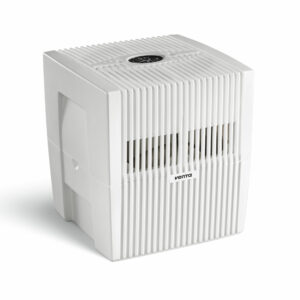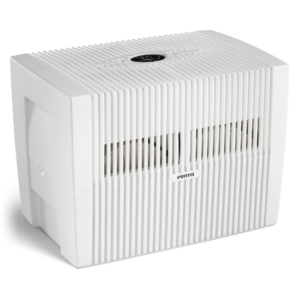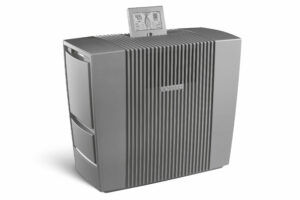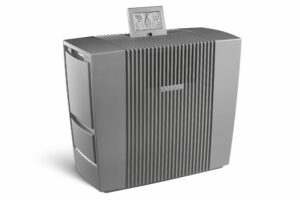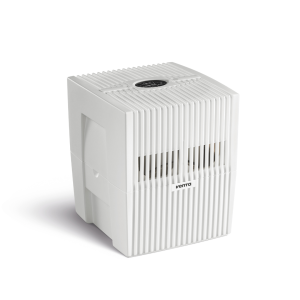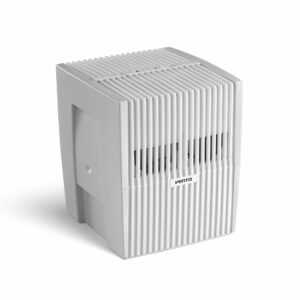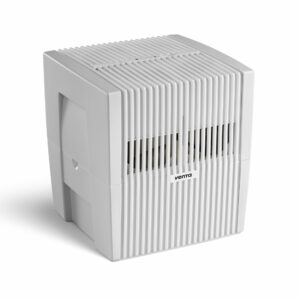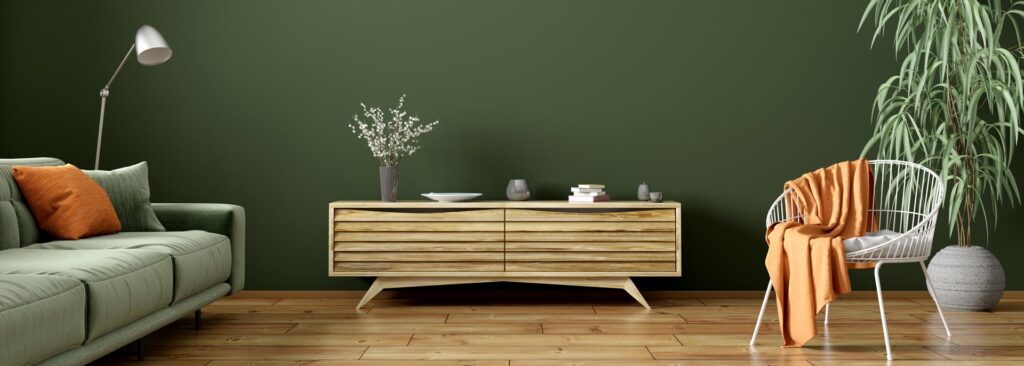
Flooring and Furniture
Optimal Humidity for Wood Flooring and Furniture
Wood is a natural material valued for its positive influence on room climate. It is very popular in homes for both floors and furniture. However, central heating often makes indoor air too dry, which can create unsightly cracks and gaps in the wood.
Below, we explain why optimal humidity is so important.
When and why do cracks appear in wood?
Wood adjusts to its surroundings. Depending on the ambient conditions, it absorbs moisture from the air or releases it. If the air is too dry, wood loses moisture, which causes tiny gaps and cracks to occur. When the humidity rises again, the wood expands and closes the surface flaws.
However, if humidity remains too low and temperature too high over a longer period, the wood can be damaged permanently.
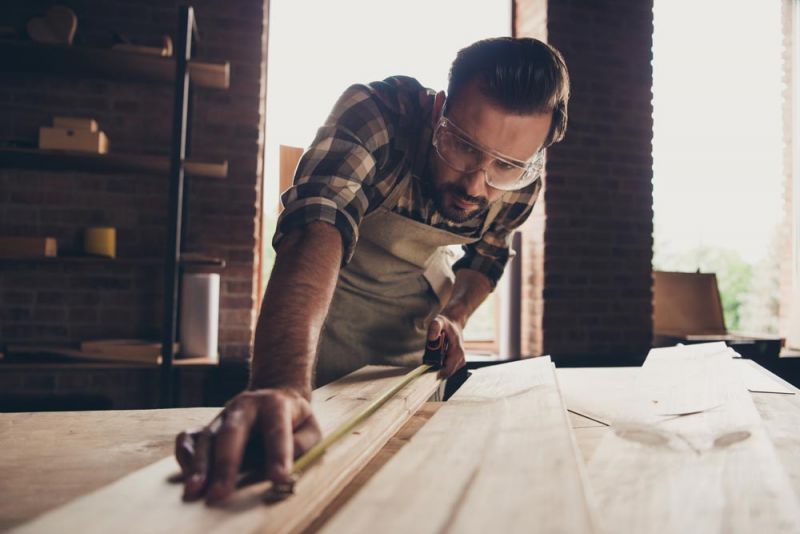
Tips and Handy Hints for New Wood Flooring
Before you start installing wood flooring, we recommend storing the wood inside the room for at least 48 hours. This allows the wood to acclimatize, preventing damage due to expansion and shrinking. You will also make sure that wood flooring, e.g. parquet, rests on a flat surface so it doesn’t warp. During both storage and installation, ensure an ideal room climate. The recommended values are a room temperature of 68 to 74 degrees and a humidity of 40% to 60%. If you have underfloor heating, keep the temperature above 65 degrees and below 68 degrees.
Tips and Handy Hints for New Wood Furniture
You want lasting enjoyment of your new wood furniture (especially solid wood) in perfect condition. The first step is ensuring gradual acclimatization after you bring it into your home. Over the first few days, leave doors and drawers open so they don’t shrink or expand unevenly. It’s also a good idea to place furniture a few inches away from walls. This is especially important in new buildings because the walls may contain residual moisture.
You have your own ideas about where your furniture should go to create your perfect interior. However, if possible keep furniture at a distance from radiators or stoves because the heat from them can dry out the wood.
Over the long term, you can help your wood furniture stay beautiful by ensuring the right temperatures and consistent humidity.
The Optimal Humidity and Temperatures for Wood
Heating, air conditioners, and ventilation systems remove moisture from indoor air, often making it too dry. An optimal room climate all year round is important to prevent cracks and gaps from forming in wood.
This means a relative indoor humidity of 40% to 60% and a temperature between 68 °F and 74 °F. Under these conditions, wood barely expands or contracts. Avoid exposing wood flooring and furniture to excessively high or low humidity.
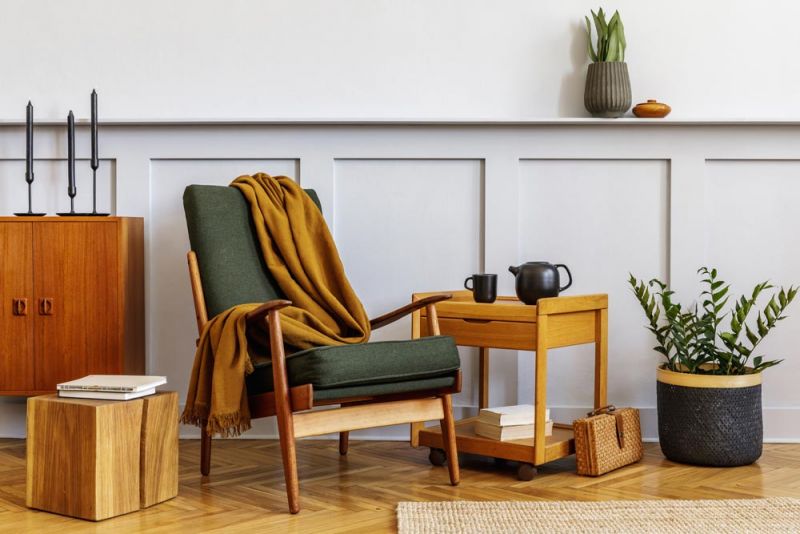
Humidifiers for Wood Flooring and Furniture
Humidifiers are an uncomplicated and reliable way to achieve a constant, year-round humidity of a healthy range between 40% and 60%. They can prevent unsightly gaps and cracks from forming during the heating period.
What’s more, Venta humidifiers help reduce harmful substances in indoor air. While pure water evaporates to humidify the room, contaminants such as house dust and pollen, are naturally reduced in the air or captured in the water inside the appliance. The result: good air quality in your rooms. At the same time, you keep wooden items in good condition.
What should you look for when buying a humidifier?
Check the specified room size of the appliance, remembering that the coverage estimates assume a room with closed doors.
If you keep the doors open, add the areas of the adjacent rooms to your original room size. We recommend that you add another ⅓ to the total room area to ensure the appliance achieves the required results even at a low or medium setting. This also means it doesn’t operate at its limit so the noise level remains low.
Example (Room size: 430 ft²): If the doors are open and the room is adjacent to a 160 ft² room, add the two-room sizes together (intermediate sum: 590 ft²). Then add another ⅓ of the intermediate sum so that the appliance doesn’t have to operate at its limit. Therefore, the appliance should be designed for an area of approx. 785 ft².
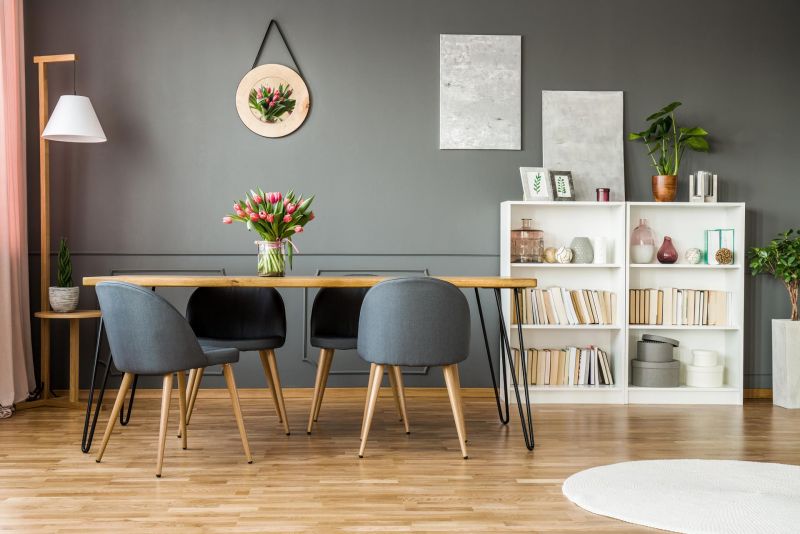
You Have a humidifier set up, but the humidity does not increase
There can be various reasons for this. One possibility is that the room contains a significant amount of natural materials such as wood flooring, wooden furniture, or books. If the air starts out too dry and the appliance adds humidity, the natural materials absorb the moisture first. Only when they have achieved their natural moisture can the humidity in the room increase.
The more natural materials you have in your room, the longer it may take to reach the optimal humidity. Especially when you use a Venta Humidifier for the first time, you may have to be patient and wait for 7-10 days while running the unit constantly. We recommend switching your appliance to the highest setting so the humidity increases as quickly as possible.
